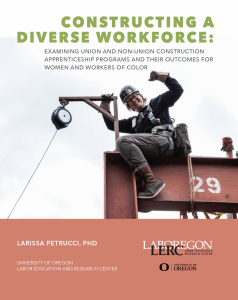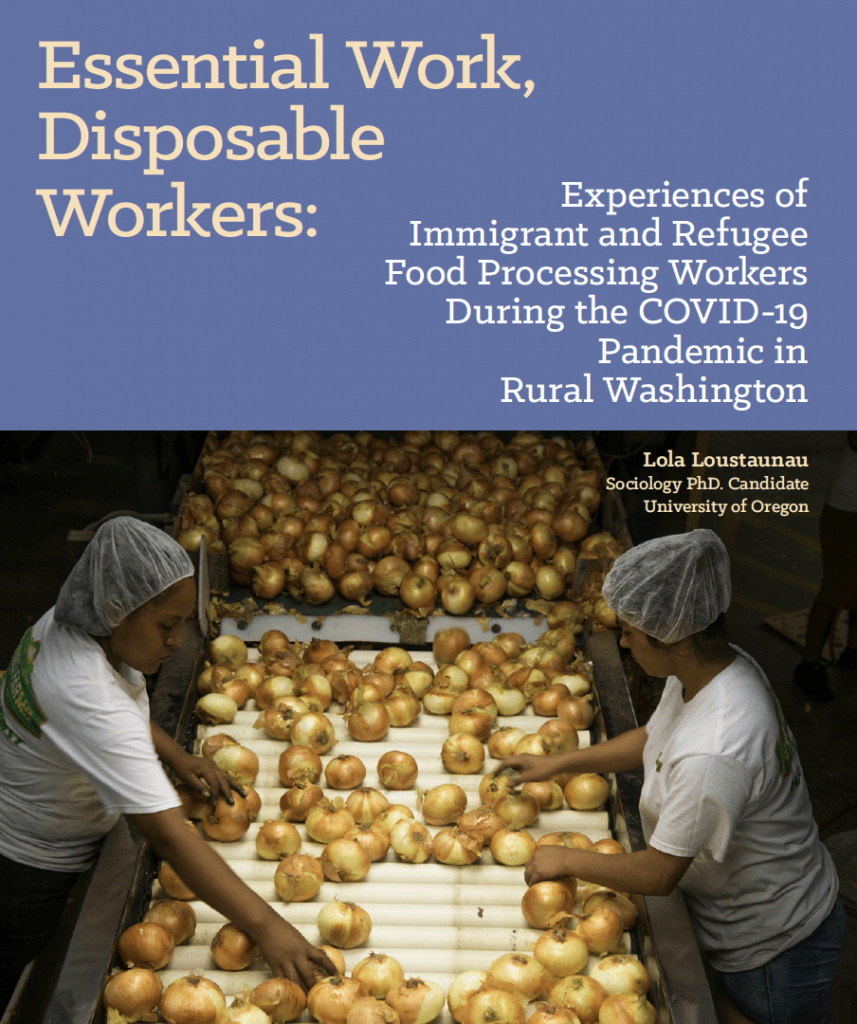
Oregon’s construction industry continues to be an important source of high-wage jobs across the state.
With billions of new state and federal infrastructure investment anticipated over the decade, it’s more important than ever to provide a pathway for women and workers of color into construction jobs.
In her new report, Constructing a Diverse Workforce: Examining Union and Non-Union Construction Apprenticeship Programs and their Outcomes for Women and Workers of Color, LERC researcher Dr. Larissa Petrucci examines the progress women and workers of color have made entering the Oregon construction industry.
Dr. Petrucci’s findings demonstrate that pre-apprenticeship programs and targeted recruitment efforts over the last decade have had a significant impact.
For example, in 2020, women constituted 11% of newly enrolled apprentices, an increase of more than 50% from a decade ago. Workers of color constituted 31% of all newly enrolled apprentices in 2020, also marking an increase of more than 50% over the decade.
Dr. Petrucci’s research also demonstrates that unions are critical to creating a more diverse construction workforce.
Not only do unions train more than 70% of all apprentices, but union apprenticeship programs were also significantly more diverse, and had much higher graduation rates for women and workers of color. Union apprenticeship programs were also far more successful placing workers into higher-paying jobs within the construction industry.
Despite recent progress, women and workers of color continue to face significant obstacles accessing careers in construction industry, and Dr. Petrucci’s report provides detailed recommendations for addressing both institutional and individual barriers.
Download the Executive Summary
More information and a recording of the Apprenticeship Report Briefing held over Zoom on November 16, can be found here.

